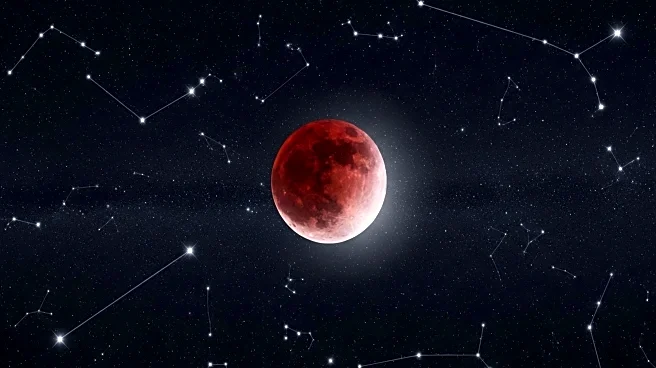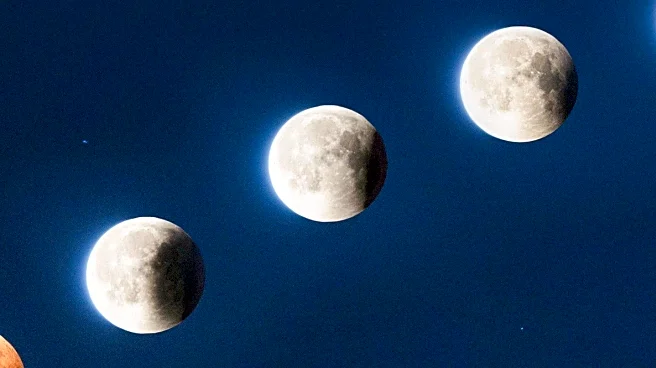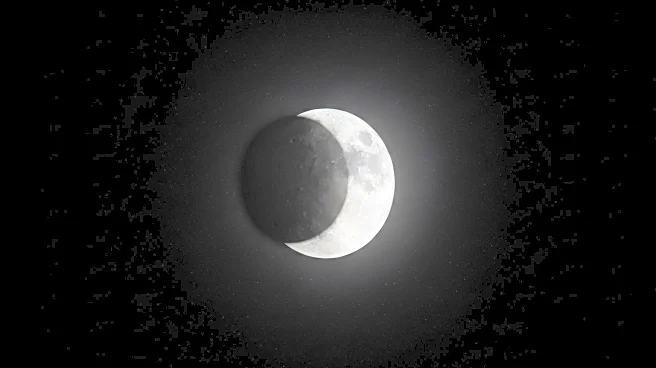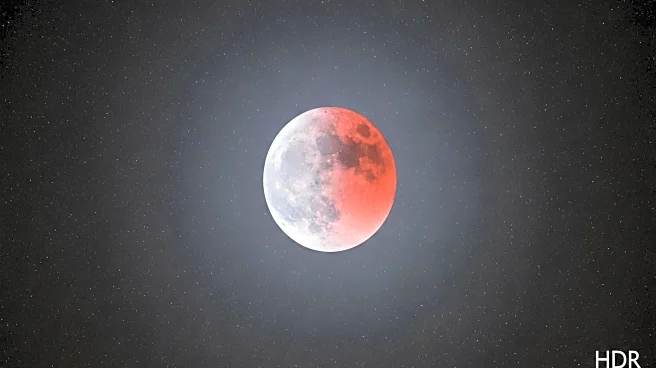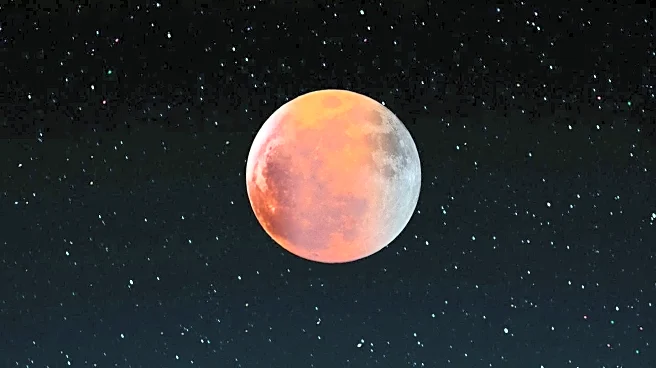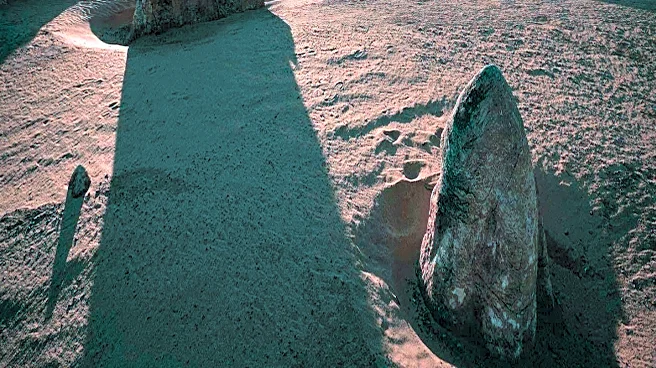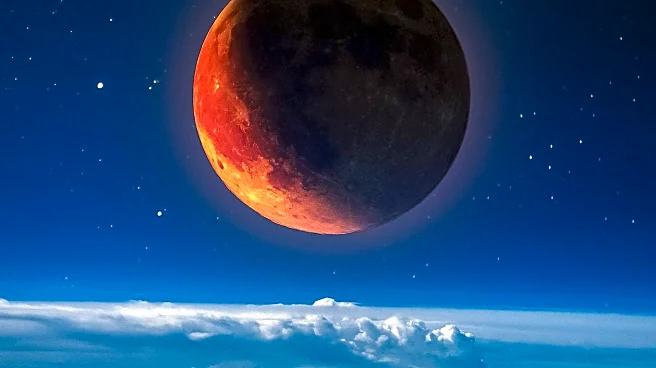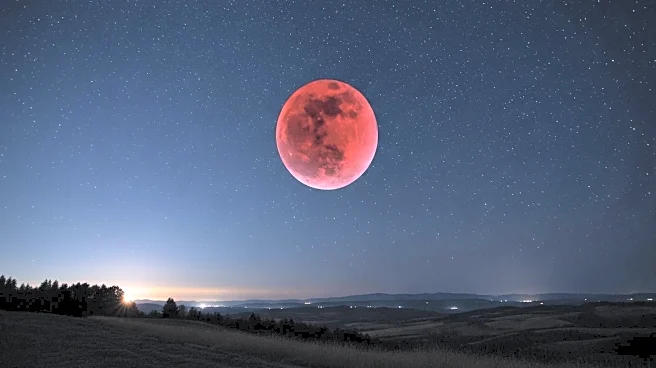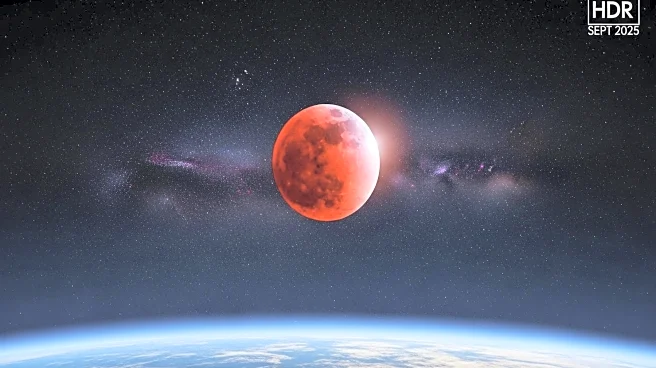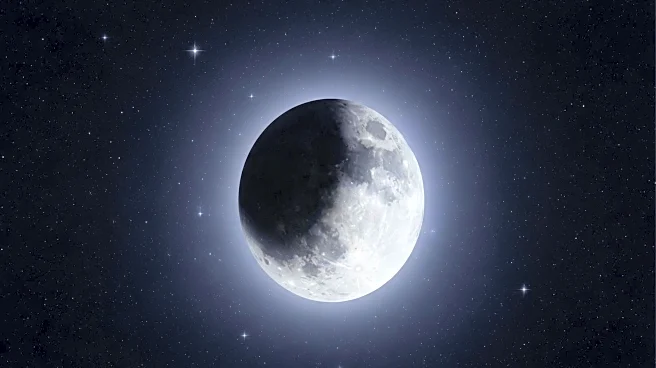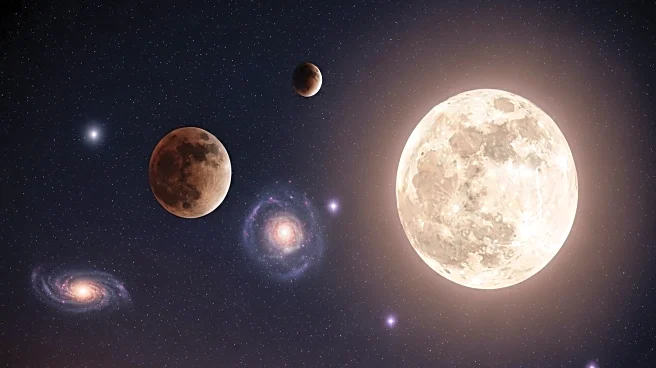What is the story about?
What's Happening?
A total lunar eclipse is set to occur on September 7-8, 2025, during which Earth's shadow will cover the moon, resulting in a 'blood moon' effect. This astronomical event happens when the Earth, moon, and sun align perfectly, allowing Earth's shadow to cast over the moon. The moon will appear red due to Rayleigh scattering, where longer red wavelengths of sunlight pass through Earth's atmosphere. The eclipse will be visible to approximately 76% of the global population, including regions in Australia, Asia, Africa, and eastern Europe. However, viewers in the Americas will miss the event as the moon will be below the horizon during the eclipse.
Why It's Important?
The total lunar eclipse offers a unique opportunity for stargazers and photographers to witness and capture a rare celestial event. It highlights the intricate orbital mechanics that occasionally align to create such phenomena. The event also serves as an educational moment for astronomy enthusiasts and the general public, fostering interest in space science. Additionally, the widespread visibility of the eclipse underscores the interconnectedness of global astronomical events, as people across different continents can simultaneously experience the spectacle.
What's Next?
As the eclipse approaches, individuals interested in viewing the event are encouraged to find optimal viewing locations free from obstructions. Space.com plans to host a livestream of the eclipse, providing access to those unable to view it directly due to weather conditions or geographical limitations. This online coverage will include live updates and reports from observers worldwide, ensuring that the event can be enjoyed by a broader audience.
Beyond the Headlines
The 'blood moon' phenomenon can spark discussions about the cultural and historical significance of lunar eclipses across different societies. Historically, such events have been interpreted as omens or significant markers in various cultures. In modern times, they serve as reminders of the natural beauty and complexity of our universe, encouraging scientific exploration and appreciation of celestial mechanics.
AI Generated Content
Do you find this article useful?
